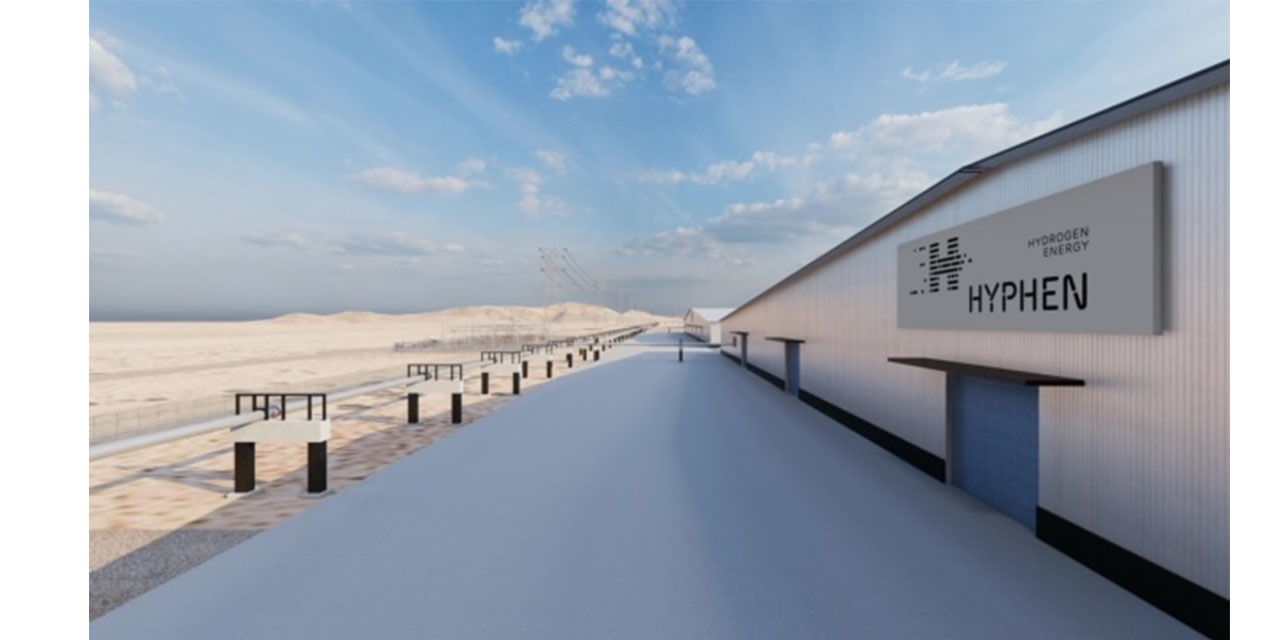Martin Endjala
As the world moves towards a green economy, Namibia’s green hydrogen project is projected to produce 350 000 tons of the gas once it is fully operational.
Currently, 90 percent of the world has committed to achieving net zero carbon emissions with the use of solar and wind power as the main source of energy.
Big market countries like Japan, China, the USA and Europe are seeking to reach lower carbon emissions but do not have enough land to build green energy plants which makes Namibia a very good prospect in this regard.
In a recent media briefing, the Chief Executive Officer of Hyphen Hydrogen Namibia, Marco Raffinetti said that by 2050, the world is looking at producing volumes of 550 million tons of hydrogen by third parties of international agencies, while Namibia is looking at producing 350 000 tons, which is only a drop in the bucket.
He said that 660 million tons’ is the main goal of reaching net zero by 2050. To effectively produce green energy, it is estimated that green energy will be worth shy of one trillion US dollars by 2050.
Raffinetti also indicated that the green energy market is one of the biggest rights now, the whole market is worth US$1.7 trillion while direct use H2 production accounts for USD 830 billion.
Namibia’s market for tradable Hydrogen derivatives is projected to be worth USD 870 billion by 2050. This means Ammonia will be worth USD 350 billion by 2050.
Consequently, for effective direct electrification, 6000-9000 hyphen projects are needed, which is over US$10 billion each to achieve net zero
Why Namibia? The country is one of the most sparsely populated countries in the world with wide open spaces.
Natural resources are another important element as well as its democracy, freedom and respect for human rights and the environment entrenched in the Constitution.
Meanwhile, Namibia’s Competitive, cost of producing pure resource bases is very low, given the act that the economics of green energy is different to the oil industry, it must remain competitive and cheap otherwise investors will go to other countries.
Comparing Namibia and Germany and other countries, to generate power, Namibia only needs one solar power panel, while Germany will have to put up three, same with Wind energy.
This means that if a country has to use three or more times to put up equipment to produce energy you are too expensive; Hence Namibia’s wind energy is important in driving down the cost of hydrogen.
This is one of Namibia’s superpowers because it has both solar and wind energy, some of the best in the world, even surpassing the Sahara Desert.
First operations are expected in 2027 to flow, although it’s a new industry, many people are still learning about the industry, and it is expected to create about 3 500 jobs during the construction phase and another 15 000 once it is operational as well as 200 000 more jobs envisaged in the country.
The CEO revealed that such integrated energy systems require a huge amount of intellectual property and complexity to work together, adding that their role as green hydrogen developers is to make sure that Namibia produces cheaper hydrogen over a sustained long period.




